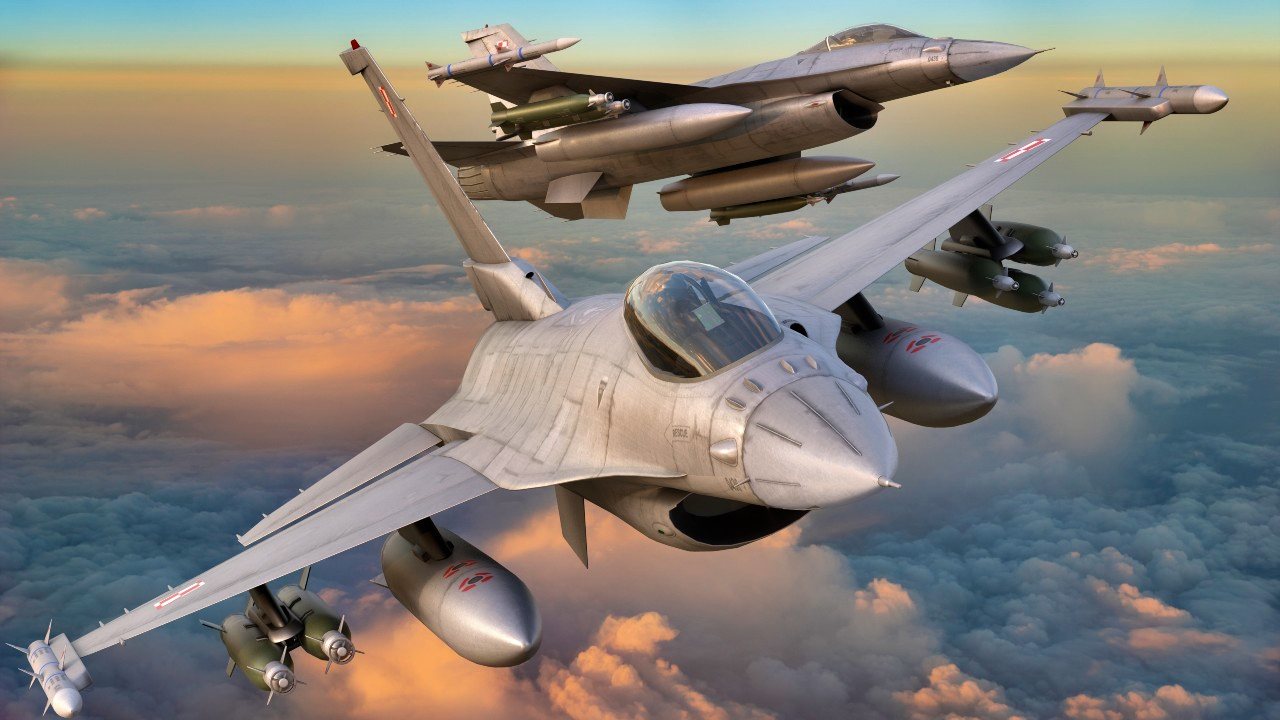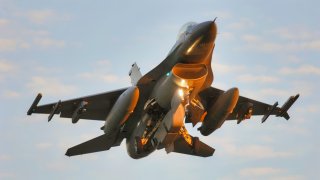Poland’s F-16s to Be Upgraded to Advanced 'Viper Configuration'
Poland’s fleet of F-16 Fighting Falcons is set for significant modernization, as the U.S. has approved a $7.3 billion mid-life upgrade (MLU). The upgrade will convert Poland’s F-16s to the advanced Viper configuration, featuring Northrop Grumman’s AN/APG-83 AESA radar, upgraded mission computers, and enhanced electronic warfare systems.
What You Need to Know: Poland’s fleet of F-16 Fighting Falcons is set for significant modernization, as the U.S. has approved a $7.3 billion mid-life upgrade (MLU). The upgrade will convert Poland’s F-16s to the advanced Viper configuration, featuring Northrop Grumman’s AN/APG-83 AESA radar, upgraded mission computers, and enhanced electronic warfare systems.

-The enhancements will boost Poland’s air defense and support NATO’s regional security efforts. Lockheed Martin will oversee the modernization, which includes integration of advanced weapons systems such as the AGM-158 JASSM and AIM-9X Sidewinder missiles.
-These upgrades will maintain Poland’s air combat readiness and strengthen its role within NATO.
Poland’s F-16 Fleet to Receive $7.3 Billion Modernization Boost
NATO member Poland will soon see its fleet of F-16 Fighting Falcons enhanced as the U.S. has approved the mid-life upgrade (MLU), enabling Warsaw to modernize its existing aircraft to the new Viper configuration.
The enhancements to the Polish F-16s – designated the Jastrz b (Goshawk) – will include integration of the Northrop Grumman AN/APG-83 active electronically scanned array (AESA) radar, an upgraded Raytheon-RTX mission computer, Link 16 datalink, modernized cockpit display, and new electronic warfare (EW) systems. The F-16Vs will also be equipped with a ground-collision avoidance system.
Lockheed Martin was named as the principal contractor, and the estimated total cost was reported to be $7.30 billion.
"The State Department has made a determination approving a possible Foreign Military Sale to the Government of Poland of F-16 Viper Midlife Upgrade and related elements of logistics and program support for an estimated cost of $7.30 billion, the Defense Security Cooperation Agency announced on Wednesday, and "delivered the required certification notifying Congress of this possible sale."

The enhancements will increase the Polish Air Force's "air defense and surveillance capabilities, support national security, and strengthen Poland's defense and contributions to NATO," while it will also "support the foreign policy goals and national security of the United States by improving the security of a NATO Ally that is a force for political and economic stability in Europe," the agency added.
Poland's F-16 upgrades will not adversely impact U.S. defense readiness, as Warsaw already has the F-16 fighters in its fleet. In addition to the upgrades, the deal will include related equipment, spares, and support.
"It also includes test articles for Lockheed Martin AGM-158 Joint Air-to-Surface Standoff Missile (JASSM), Boeing GBU-39 Small Diameter Bomb I, Raytheon-RTX GBU-53/B StormBreaker, and Raytheon-RTX AIM-9X Block II Sidewinder munitions to be carried," international military analyst firm Janes reported.
The Poland Air Force has operated the F-16C/D Block 52 multirole fighter since 2006 after it closed a deal with Lockheed Martin in 2003 to procure 48 of the aircraft to replace its Warsaw Pact-era Mikoyan-Gurevich MiG-21 (NATO reporting name Fishbed) and Sukhoi Su-22 (NATO reporting name Fitter-K). Warsaw began the search for the replacement aircraft several years earlier, and due to its aspirations to join NATO, it turned to Western aircraft makers.
The Fighting Falcon at 50
It was in January 1974 that the F-16 made its maiden flight, while it officially entered service on August 17, 1978.
Though the U.S. Air Force is now longer acquiring new F-16s, Lockheed Martin – which now produces the all-weather multirole fighter – is producing the latest variants for foreign customers around the world. Production is on track to continue through the end of the decade.
The U.S. Air Force announced earlier this month that it will begin to retire its oldest F-16 Fighting Falcons. However, the service expects its newer Block 40 and Block 50 models to remain in service until at least the early 2040s while receiving upgrades and other enhancements to allow the aircraft to retain its edge in combat.
Author Experience and Expertise: Peter Suciu
Peter Suciu is a Michigan-based writer. He has contributed to more than four dozen magazines, newspapers, and websites with over 3,200 published pieces over a twenty-year career in journalism. He regularly writes about military hardware, firearms history, cybersecurity, politics, and international affairs. Peter is also a Contributing Writer for Forbes and Clearance Jobs. You can follow him on Twitter: @PeterSuciu. You can email the author: [email protected].
Image Credit: Creative Commons and/or Shutterstock.


